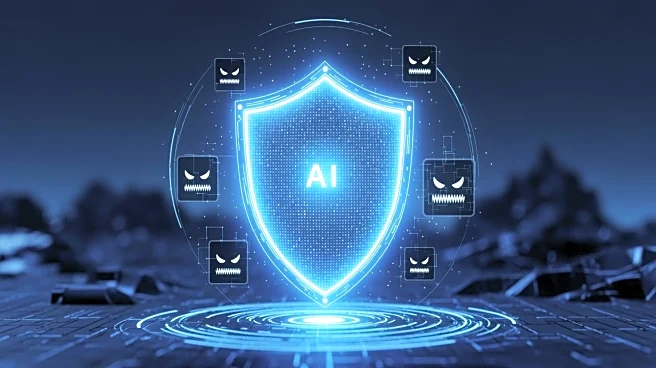What's Happening?
AI-enabled ransomware attacks have become a primary concern for Chief Information Security Officers (CISOs), as highlighted in CSO's 2025 Security Priorities study. The study reveals that 38% of security
leaders identify AI-driven ransomware as their top security issue. This concern is echoed by findings from CrowdStrike's 2025 State of Ransomware Survey, which underscores the evolving nature of ransomware threats. The survey indicates that adversaries are increasingly using AI to enhance the speed and sophistication of their attacks, posing significant challenges to traditional cybersecurity defenses. Elia Zaitsev, CTO at CrowdStrike, emphasized that AI is being weaponized to accelerate various stages of cyberattacks, reducing the time defenders have to respond effectively.
Why It's Important?
The rise of AI-enabled ransomware attacks represents a significant shift in the cybersecurity landscape, with profound implications for businesses and government agencies. As attackers leverage AI to enhance their capabilities, existing security measures may become inadequate, necessitating the development of more advanced and intelligent defenses. This trend could lead to increased investments in cybersecurity technologies and a reevaluation of current security strategies. Organizations that fail to adapt may face heightened risks of data breaches, financial losses, and reputational damage. The urgency to address these threats is underscored by the need for CISOs to stay ahead of rapidly evolving attack methodologies.
What's Next?
In response to the growing threat of AI-enabled ransomware, cybersecurity leaders are likely to prioritize the development and implementation of advanced defense mechanisms. This may include investing in AI-driven security solutions that can match the speed and sophistication of modern cyber threats. Additionally, there may be increased collaboration between industry stakeholders to share threat intelligence and develop best practices for mitigating AI-driven attacks. As the threat landscape continues to evolve, ongoing research and innovation will be crucial in maintaining effective cybersecurity defenses.











